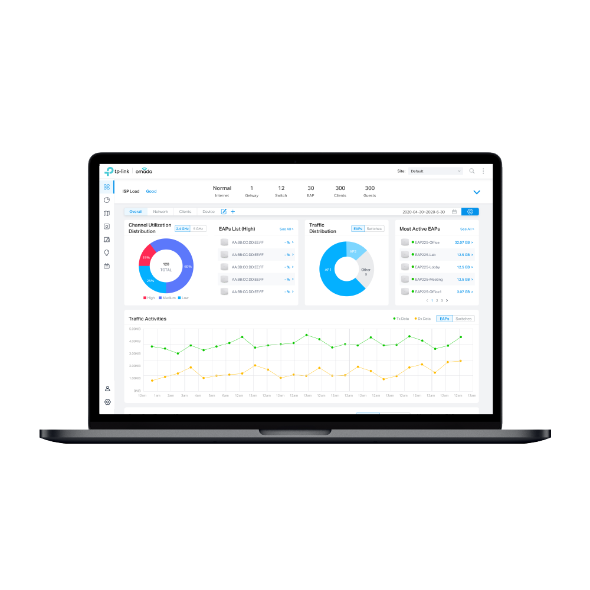How to Configure Omada Controller as a Windows Service(above Controller 2.5.4)
EAP225 V3 , EAP110-Outdoor V3 , EAP225-Wall , EAP115 V4 , OC200 , EAP225-Outdoor , EAP225 V2 , EAP245 , EAP320 , EAP110 , EAP220 , EAP330 , EAP120 , EAP235-Wall , EAP110 V4 , EAP115 , EAP225 , EAP110-Outdoor , Omada Software Controller , EAP115-Wall
Скорошните актуализации може да имат разширен достъп до функциите, обсъждани в този ЧЗВ. Посетете страницата за поддръжка на вашия продукт, изберете правилната хардуерна версия за вашето устройство и проверете или в Datasheet, или в секцията с фърмуера за последните подобрения, добавени към вашия продукт.
This document is suitable for Omada Controller V2.5.4 or above. For Omada Controller V4.1.5 or above, please refer to FAQ 2915.
Introduction
This document introduces how to configure Omada Controller as a Windows Service by using NSSM.
Prerequisites
1. A computer with the Omada Controller installed already.
2. Download the NSSM – the Non-Sucking Service Manager (https://nssm.cc/download)
Procedures
1. Extract nssm.exe to a convenient location, here I use “C:\Program Files (x86)\TP-LINK” as e xample.
2. Make sure you have ran Omada Controller before, or you can just keep Omada Controller running during this operation.
3. Run Windows Command Line as administrator and cd to the path you placed nssm.exe. Here is the C:\Program Files (x86)\TP-LINK.
4. Type nssm install “Omada Controller” to create a new Service using nssm.
Set the following parameters as listed below:
Application
Path:
C:\Program Files (x86)\TP-LINK\EAP Controller\jre\bin\java.exe
Startup directory:
C:\Program Files (x86)\TP-LINK\EAP Controller\jre\bin\
Arguments:
-server -Xms128m -Xmx1024m -XX:MaxHeapFreeRatio=60 -XX:MinHeapFreeRatio=30 -XX:+HeapDumpOnOutOfMemoryError -Deap.home="C:\Program Files (x86)\TP-LINK\EAP Controller" -cp "C:\Program Files (x86)\TP-LINK\EAP Controller\lib\*" com.tp_link.eap.start.EapMain
Details
Display name:
Omada Controller by default
Description:
Add one if you want
Startup type:
Automatic
Log on
Local System account and select “Allow service to interact with desktop”
Environment
set scriptDir="C:\Program Files (x86)\TP-LINK\EAP Controller\bin"
set eapHome="C:\Program Files (x86)\TP-LINK\EAP Controller"
JAVA_HOME="%eapHome%\jre"
PATH=%JAVA_HOME%\bin;%path%
5. Click Install service and will show you the successful note.
6. After the Omada Controller service is successfully set up, please restart your computer and the Omada Controller service will startup automatically. Please check on Windows Task Manager to see if the java.exe and mongod.exe are running properly. Then you can type http://127.0.0.1:8088 or https://127.0.0.1:8043 to login to the Omada Controller’s Web management page.

Note:
1. It is not recommended that you put nssm.exe in the installation path of the Controller, otherwise it will disappear when you upgrade the Omada Controller.
2. When you are going to update the Controller, please remember to stop the service first, or the process will be denied.
3. Run Windows Command Line as administrator and and cd to the path you placed nssm.exe. Type in the following commands to manage the service.
(1) nssm edit “Omada Controller”
(2) nssm start “Omada Controller”
(3) nssm stop “Omada Controller”
(4) nssm restart “Omada Controller”
(5) nssm status “Omada Controller”
(6) nssm remove “Omada Controller”
Looking for More
Полезен ли беше този ЧЗВ?
Вашите отзиви помагат за подобряване на този сайт.
Какви проблеми открихте с тази статия?
- Недоволен от продукта
- Твърде сложно
- Объркващо заглавие
- Не се отнася за мен
- Твърде неясно
- Друга причина
Ще се радваме да получим отзивите ви, моля, уведомете ни как можем да подобрим това съдържание.
Благодаря ти
Оценяваме вашето мнение.
This website uses cookies to improve website navigation, analyze online activities and have the best possible user experience on our website. You can object to the use of cookies at any time. You can find more information in our privacy policy .
This website uses cookies to improve website navigation, analyze online activities and have the best possible user experience on our website. You can object to the use of cookies at any time. You can find more information in our privacy policy .
Basic Cookies
These cookies are necessary for the website to function and cannot be deactivated in your systems.
TP-Link
SESSION, JSESSIONID, accepted_local_switcher, tp_privacy_base, tp_privacy_marketing, tp_smb-select-product_scence, tp_smb-select-product_scenceSimple, tp_smb-select-product_userChoice, tp_smb-select-product_userChoiceSimple, tp_smb-select-product_userInfo, tp_smb-select-product_userInfoSimple, tp_top-banner, tp_popup-bottom, tp_popup-center, tp_popup-right-middle, tp_popup-right-bottom, tp_productCategoryType
Youtube
id, VISITOR_INFO1_LIVE, LOGIN_INFO, SIDCC, SAPISID, APISID, SSID, SID, YSC, __Secure-1PSID, __Secure-1PAPISID, __Secure-1PSIDCC, __Secure-3PSID, __Secure-3PAPISID, __Secure-3PSIDCC, 1P_JAR, AEC, NID, OTZ
Zendesk
OptanonConsent, __cf_bm, __cfruid, _cfuvid, _help_center_session, _pendo___sg__.<container-id>, _pendo_meta.<container-id>, _pendo_visitorId.<container-id>, _zendesk_authenticated, _zendesk_cookie, _zendesk_session, _zendesk_shared_session, ajs_anonymous_id, cf_clearance
Analysis and Marketing Cookies
Analysis cookies enable us to analyze your activities on our website in order to improve and adapt the functionality of our website.
The marketing cookies can be set through our website by our advertising partners in order to create a profile of your interests and to show you relevant advertisements on other websites.
Google Analytics & Google Tag Manager
_gid, _ga_<container-id>, _ga, _gat_gtag_<container-id>
Google Ads & DoubleClick
test_cookie, _gcl_au















_EU_3.0_2401__normal_20240119043538b.png)